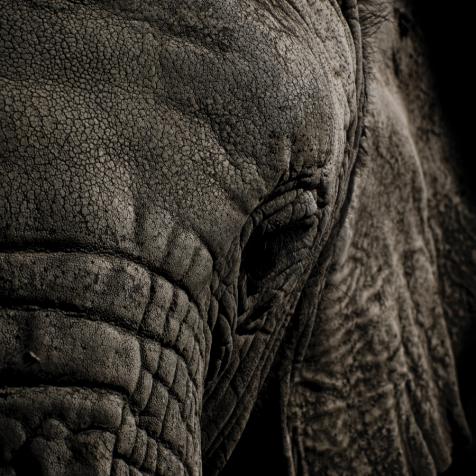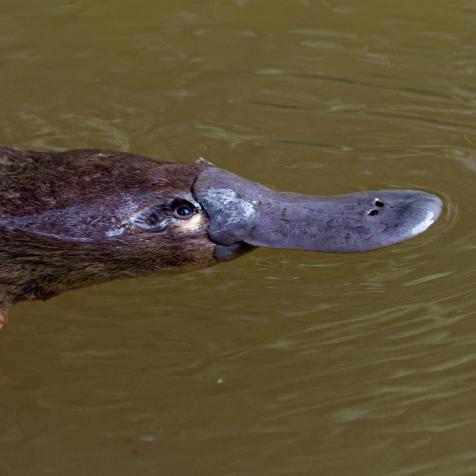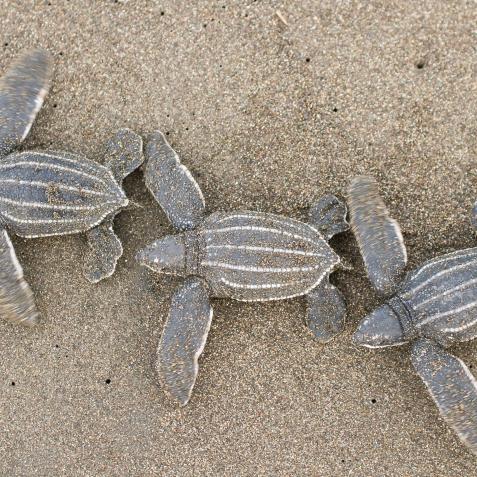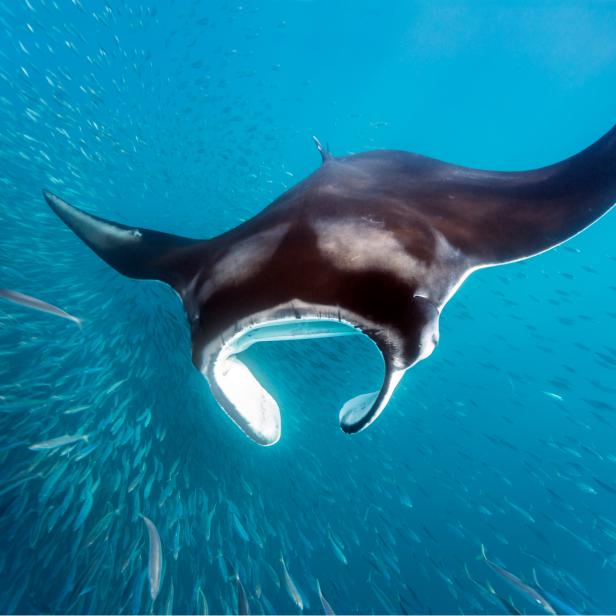
Westend61
New Study from Brazil Makes a Huge Splash in Manta Ray Conservation

One batoid (the skates and rays) that needs no introduction are the manta rays. With 20-ft wingspans, these plankton-loving filter feeders can glide through bright blue oceans as if soaring effortlessly across a cloudless sky.
Manta rays have increased in popularity as more people hop in the ocean and snap a photo. With that said, development of those majestic wings doesn’t happen overnight. The life history traits of mantas goes veeery slooowlyyy. The average litter size consists of a single pup, with females taking about five years between pregnancies. To put that in perspective, consider how common twins are in human siblings or a one-year age difference for others. This means that mantas are especially susceptible to overfishing, which is exactly what’s happening.
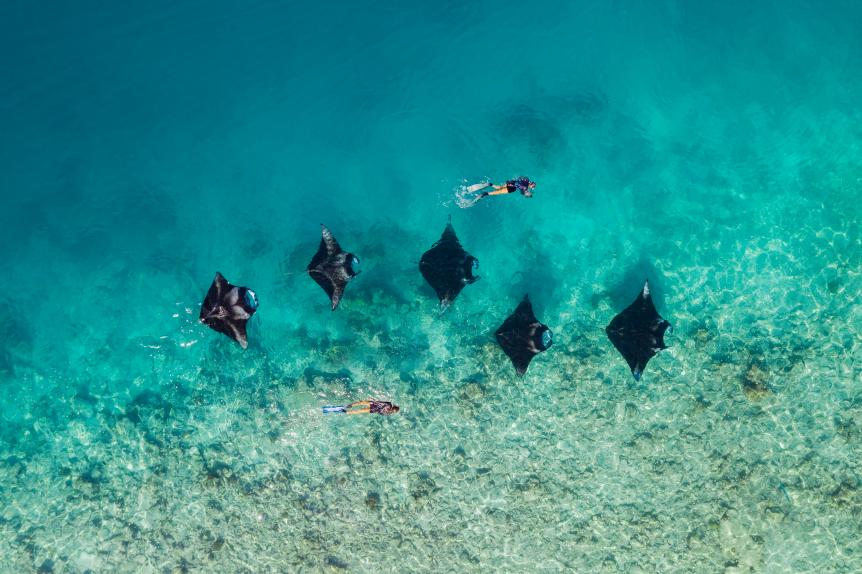
Anthony Harvie
Swimming with Manta Rays has grown in popularity.
Thanks to scientist Dr. Andrea Marshall dubbed Queen of the Mantas, two separate species of manta rays — the reef manta ray (Mobula alfredi) and the giant manta ray (Mobula birostris) — have been confirmed. This information is incredibly important in making conservation efforts more effective. For instance, confirmation of two manta species prompted review by the IUCN Red List Assessment, which found that reef manta rays are ‘Vulnerable’ whereas the giants are ‘Endangered’. Consequently, the latter are of greater conservation concern. This has resulted, in part because manta rays are targeted for their gill rakers. Used by people for health tonics, manta rays need this appendage to filter food out of the water. In particular, Brazil has been pegged as a major supplier to this demand. This has made knowledge of mantas in the South Atlantic critical for manta survival.
A recent study with Nayara Bucair as lead author is making a huge splash for manta research, becoming only the third publication ever published for Brazilian waters. Specifically, mantas were observed in northeast Brazil among 21 clustered islands of volcanic rock known as the Ferando de Noronha Archipelago (FNA). Bursting with biodiversity and a thriving ecosystem, FNA is a marine protected area (MPA) that has even become a UNESCO World Heritage Site.
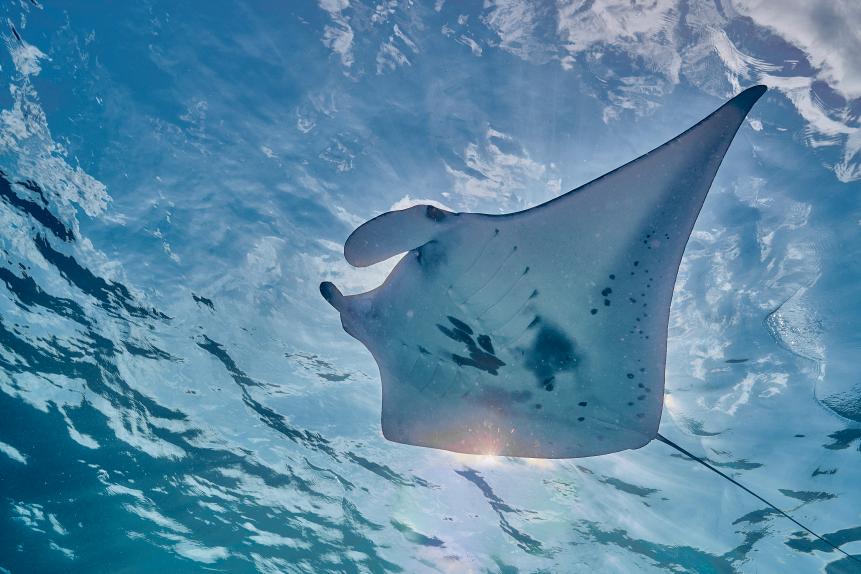
Aleksei Permiakov
Reef manta in shallow water.
To uncover the secret lives of mantas at FNA, the all-female team of researchers reviewed 130 manta sightings recorded by the public — aka citizen scientist. The researchers scrutinized over their data for trends in sex, size, and coloration. The information told the team whether use of FNA by mantas differed between males and females, inferred presence of a nursery ground, and varied by species (distinguished by color patterns).
The research team’s efforts found some BIG surprises that came in small packages. None of those 20-ft-wide adult manta rays were encountered. This means FNA is a kids-only playground! A more scientific way to put it- based on the presence of only juveniles, FNA is likely a manta ray nursery ground. The discovery is a big deal in manta ray conservation, since the total nursery grounds identified worldwide can be counted on a person’s hand. As mentioned before, equally important to this knowledge is knowing exactly who is using FNA. That’s where things get weird.
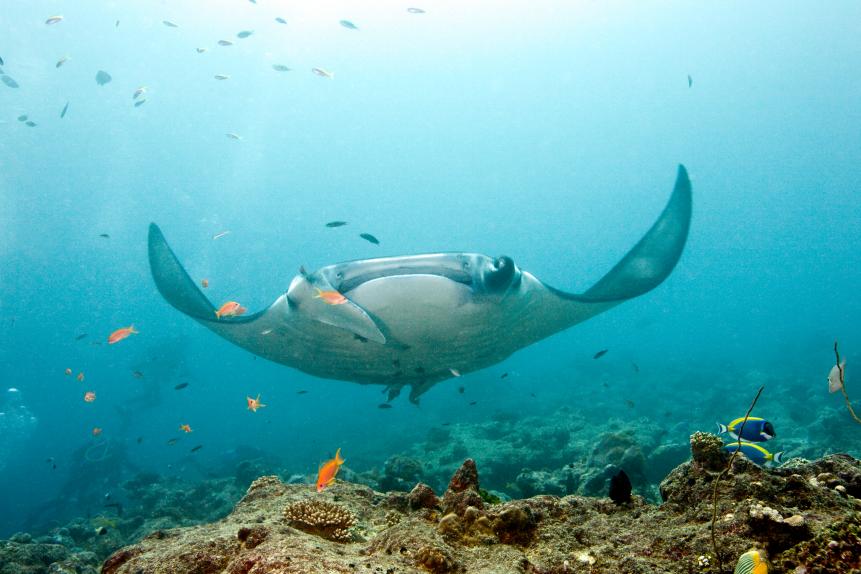
Michele Westmorland
Scientists discovered a new Manta Ray nursing ground.
Despite reef and giant mantas differing noticeably in their color patterns, it turns out mantas at FNA are rocking their own style. FNA mantas have white faces like the reef mantas while also sporting the dark gill blotches unique to the giants. It turns out mantas from FNA lend support to a theory that’s been floating along the streets of shark science, which hypothesizes existence of a third manta species!
This work is another testament to the value and need for citizen scientists, which can be anyone like you, the reader! To participate, enter your information or spread the word for groups like Mantas do Brasil (used in this study), MantaMatcher, Manta Trust, and Manta Watch.












